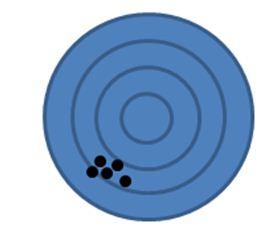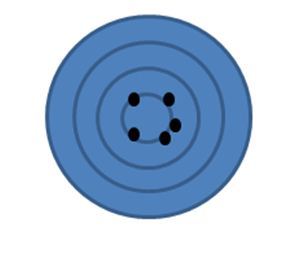 Quality versus Grade
Quality versus Grade
We saw in the earlier lesson on Quality Management project domain that quality of a product is a measure of how closely it matches its intended purpose.
Consider an example.
Two carpenters are given specifications of a table. First specification has a very fine design, with carved legs and flower pattern on the surface of the table. The other specification has a bland design with four straight legs and a plain sheet of wood as its surface.
First one is intended to be used as a dining table at an upscale restaurant and second table is intended to be used for cutting vegetables in its kitchen.
When these tables are made, if they match their specifications pretty well – then both of these tables are said to be of good quality.
Now, you being a connoisseur of art, would like the first table, with all its exquisite carvings and the fine finish, much better than the second one. For you then the first table is of higher grade, while the other basic table is of low grade.
On the other hand, let us say that the first carpenter did not read the specifications properly. And instead of flower design on the table surface he carved a beautiful leafy design that he is familiar with.
It was well executed and had fine finish. For you it might still be of higher grade table than the second table, but the first table is of low quality now – because it did not match up to the requirements.
Let us look at one more example.
Which of these two television would you like, 42 inch LED 3D TV or the good old CRT television of 80’s?
If you opted for LED TV, you probably chose it over the CRT TV because of its superior grade. That makes CRT TV of low grade. However if you were the first ones to receive CRT TV when it was first introduced, you would choose it due to its superior grade – at that point in time. So, grade is a measure of value people place on the product.
A high grade product may be of low quality, and a high quality product may be of low grade.
Grade relates to Features of the product, while Quality relates to Requirements of the product.
Precision versus Accuracy
Recently I was at customer office at Phoenix, AZ. A bunch of friends decided to explore San Diego over the long weekend. We speculated the distance on our own (before referring to the Google maps) and one of my friends said that the distance is 423 miles. The other friend estimated the distance to be somewhere between 350 to 370 miles.
I had no idea of the distance. Which one would you take?
Yes, I thought the precise estimate of 423 miles is the right answer. The precise number made me think it should be right. However, actual distance was 355 miles, pretty close to the answer given by the other friend!
While the former answer of 423 miles was precise, latter answer was more accurate.
Let us look at another example –
Let us say you are firing at bulls eye, 5 shots at a time.
On your first attempt of 5 shots you got something line this:
On your second attempt of 5 shots, it looked something like this:
You would be precise in the first attempt but not accurate, and you would be accurate in the second attempt but not precise.
Accuracy refers to how far you are from the true value; Precision refers to how close you get to the same value if you repeated the exercise several times.
What is the relevance of these for Project Quality related project management activities?
I’m glad you asked.
Let us look at Quality Vs Grade part first. Requirements define what should be the quality of the product. If we are able to measure deliverables and find them to be close enough to the requirements, we are good on quality.
Quality measurements should both be precise and accurate. If we have tests in place to measure the quality of deliverables, and they pass the test – that would be accurate. But if tests repeatedly gave the same results but did not pass – that would be precise but not accurate.
What we aim for is to be able to get right results each time the tests are run.
With this introduction, let us see how to Plan Quality in a project.






